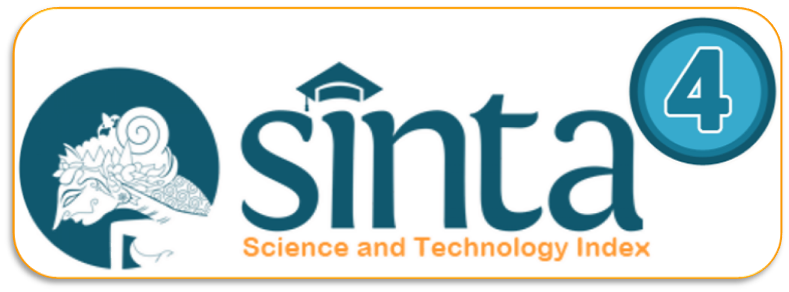Taṭwīr Mawād al-Muḥādaṡah Bi Barnāmij Microsoft Powerpoint Li Tarqiyah Qudrah aṭ-Ṭalabah `Alā Mahārah al-Kalām (Dirāsah al-Baḥṡ Wa at-Taṭwīr Bi STAI Darul Hikmah Aceh Barat)
(STAI Darul Hikmah Aceh Barat دراسة البحث والتطوير بــ) لترقية قدرة الطلبة على مهارة الكلام Microsoft Powerpoint تطوير مواد المحادثة ببرنامج
DOI:
https://doi.org/10.22373/maqalah.v3i2.2280Keywords:
Development, Speaking Skills, Microsoft PowerPointAbstract
It was noted from the observations that most of the students could only memorize and understand the vocabulary, but could not arrange it to become a sentence and could not communicate in Arabic, the causes were the inappropriate teaching media used by the lecturers and the short time they have with the lecturer. Those things cause the students to have difficulty composing Arabic sentences and the inability to communicate with Arabic friends and lecturers. After the researcher distributed the questionnaire to the students, the researcher found that the students liked conversational material and needed learning media that facilitated students conversations with friends and lecturers, and they needed the development of conversational materials with learning media. Therefore, lecturers need learning media to display these lessons. Based on this phenomenon, the researchers tried to overcome the problems that occurred by developing Muhadatsah lessons to improve students' speaking skills with the Microsoft PowerPoint program. The purpose of this study was to determine how the development of Muhadatsah lessons improved students' speaking skills with the Microsoft PowerPoint program and how effective the product was. The research method that the researcher used was R&D. The research instruments used by researchers to collect research data were observation, interviews, questionnaires, and tests. The results of the research that the researchers obtained were: the development of Muhadatsah lessons in improving students' speaking skills with the Microsoft PowerPoint program following 10 predetermined steps, and the t-test value (t-count = 23.18) is greater than the value (t-table with a significant level 5% = 2.11 and a significant level of 1% = 2.90). Then, it shows that the null hypothesis is rejected and the alternative hypothesis is accepted, which means that the Microsoft PowerPoint program is effective in increasing students' ability to improve speaking skills in Muhadatsah lessons.
References
`Aṭā, Ibrāhīm Muḥammad. Ṭuruq Tadrīs al-Lughah al-`Arabiyah. al-Qāhirah: Maktabah an-Nahḍiyah al-Miṣriyah, 1990.
`Ulām, Rajā Maḥmūd Abū, Manāhij al-Baḥṡ Fī al-`Ulūm an-Nafsiyah Wa at-Tarbawiyah. Al-Qāhirah: Dār an-Nasyr Li al-Jāmi`āt, 2011 M.
`Ulyān, Aḥmad Fuādī. al-Mahārāt al-Lughawiyah Māhiyatuhā Wa Ṭarāiq Tanmiyatihā. al-Mamlakah al-`Arabiyah as-Su`ūdiyah: Dār al-Muslim, 2010.
Aḥmad, Sayyid Maḥmūd. Tarā’iq Tadrīs al-Lughah al-`Arabiyah. Jāmi`ah Dimsyaq, 1997.
Al-`Assāf, Ṣālih Bin Ḥamad. Al-Madkhal Ilā al-Baḥṡ Fii al-`Ulūm as-Sulūkiyah. aṭ-Ṭaba`ah aṡ- Ṡāniyah. an-Nāsyir: Maktabah al-`Abīkān, 2000 M.
Arsyad, Azhar. Media Pembelajaran. Jakarta : Rajawali, 2013.
Aṣ-Ṣīnī, Maḥmūd Ismā`īl Wa `Umar aṣ-Ṣiddīq `Abd Allāh. al-Mu`ayyināt al-Bashariyah Fī Ta`līm al-Lughah. ar-Riyāḍ: al-Mamlakah al-`Arabiyah as-Su`ūdiyah, 1984 M.
Aṭ-Ṭāhir, `Alī Hiwār. Uṣūl Tadrīs al-Lughah al-`Arabiyyah. Bairūt, Lubnān: Dār ar-Rā’id al-`Arabī, aṭ-Ṭaba`ah al-Uulā, 1983.
At-Tūḥī, Ḥusain Ḥamdī. Wasā’il al-Ittiṣāl Wa at-Tiknulujiyā Fī at-Ta`līm. Kuwait: Dār al-Qalam, 1987 M.
Efendi, Ahmad Fuad. Metodelogi Pengajaran Bahasa Arab, Malang: Misykat, 2009.
Ghulāyainā, Muṣṭafā. Jāmi` ad-Durūs al-`Arabiyah. al-Qāhirah: Dār as-Salām Li aṭ-Ṭabā`ah Wa an-Nasyr Wa at-Tauzī`, 1435 H/ 2014 M.
Ḥusain, Mukhtār Ṭāhir. Ta`līm al-Lughah al-`Arabiyah Li Ghair an-Nāṭiqīn Bihā Fī Ḍau’ al-Manāhij. aṭ-Ṭaba`ah al-Ūlā. al-Haram: ad-Dār al-`Ālamiyyah, 2011.
Kismān, `Ādī. al-Madkhal al-Ittiṣālī Wa Istikhdāmihi Fī Mahārah al-Kalām Laday aṭ-Ṭalabah. Banda Aceh, 2017.
Labīb, Muḥammad Wa Munīr, al-Manāhij Wa al-Wasā’il at-Ta`līmiyyah. Bi Dūn al-Madīnah, 1977.
Markaz Nūn Li Ta’līf Wa at-Tarjamah, at-Tadrīs Ṭarā’iq Wa Istirātījiyyāt. Bairūt: Jam`iyyah al-Ma`ārif al-Islāmiyyah aṡ- Ṡaqāfah, 1432 H/ 2011 M.
Nīnūrsī, Tarmizī. Taṭwīr Manhaj at-Ta`līm Wa Taqwīm al-Lughah al-`Arabiyah Li an-Nāṭiqīn Bi Ghairihā. Banda Aceh: Mumtāz Istitut, 2015 M.
Salāmah, `Abd al-Ḥāfiẓ. Madkhal Ilā Tiknulujiyā at-Ta`līm. Dār al-Fikr, al-Urdun, aṭ-Ṭaba`ah aṡ- Ṡāniyah, 1998 M.
Setyosari, Punaji. Metode Penelitian Pendidikan dan Pengembangan. Jakarta: Kencana, 2013.
Sugiyono, Cara Mudah Menyusun Skripsi, Tesis dan Disertasi, Bandung: Alfabeta, 2014.
--------, Metode Penelitian Kuantitatif Kualitatif dan R & D, cet, 19. Bandung: Alfabeta, 2013.
Sujana, Nana dan Ahmad Rifai. Media Pengajaran. Bandung: Sinar Baru, 1992.
Syaḥātah, Ḥasan. Ta`līm al-Lughah al-`Arabiyah Baina an-Naẓariyah Wa aṭ-Ṭaṭbīq. al-Qāhirah: Dār al-Miṣriyah al-Lubnāniyah, 1993.
Tim Penelitian dan Pengembangan wahan komputer Microsoft Power Point 2007 untuk Menyusun Presentasi Bisnis, Jakarta: Salemba Infotek, 2007.
Umar, Hamalik. Media Pendidikan. Bandung: alumni, 1989.
Yūnus, Fanḥī `Alī. Dalīl al-Mu`allim Li al-Kitāb al-Asāsī Fī Ta`līm al-Lughah al-`Arabiyah Li Ghair an-Nāṭiqīn Bihā. Tūnis: al-Munaẓamah al-`Arabiyah Li at-Tarbiyah Wa aṡ- Ṡaqāfah Wa al-`Ulūm, 1983 M.




























